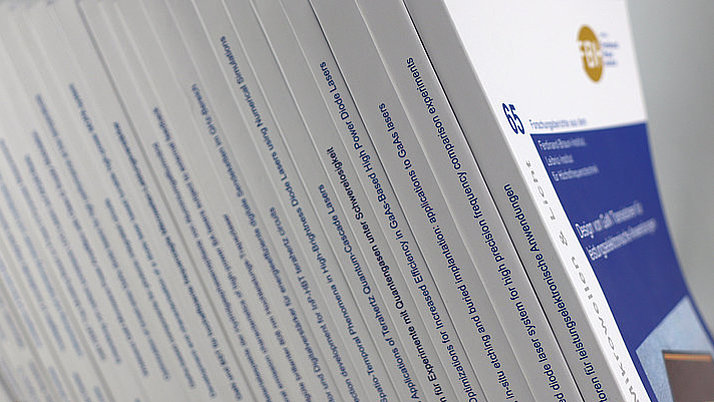A Highly Efficient Ultrawideband Traveling-Wave Amplifier in InP DHBT Technology
T. Shivan1, N. Weimann1, M. Hossain1, D. Stoppel1, S. Boppel1, O. Ostinelli2, R. Doerner1, C.R. Bolognesi2, V. Krozer1, and W. Heinrich1
Published in:
IEEE Microwave Wireless Compon. Lett., vol. 28, no. 11, pp. 1029-1031 (2018).
Abstract:
This letter presents a 1 to > 110-GHz ultrawideband traveling-wave amplifier (TWA) based on 500-nm transferred-substrate InP double-heterojunction bipolar transistor technology. The HBT cells are realized with inductive peaking at the output and match the phase delay between individual stages. The collector bias is slightly below the value for the maximum current gain. This allows a frequency-invariant high-output power characteristic with a flat group delay. The amplifier exhibits a gain of 13 dB with a measured bandwidth of 1-110 GHz and a uniform 10-dBm 1-dB compression output power with an associated maximum PAE of 8% at 110 GHz. To the best of our knowledge, this is the highest PAE and the maximum flat output power reported for such a TWA covering frequencies up to 170 GHz. The amplifier consumes only 129 mW, which is among the lowest dc power dissipations reported for the given gain-bandwidth product. Moreover, the group delay is flat across the band, which makes the TWA very useful in high-speed optical communication systems.
1 Ferdinand-Braun-Institut, 12489 Berlin, Germany
2 ETH Zürich, 8092 Zürich, Switzerland
Index Terms:
Double-heterojunction bipolar transistor (DHBT), nickel-chromium (NiCr), transferred substrate (TS), traveling-wave amplifier (TWA).
Copyright © 2018 IEEE - All rights reserved. Personal use of this material is permitted. However, permission to reprint/republish this material for advertising or promotional purposes or for creating new collective works for resale or redistribution to servers or lists, or to reuse any copyrighted component of this work in other works must be obtained from the IEEE.
Full version in pdf-format.


